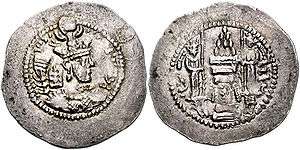441
This article is about the year 441. For the number, see 441 (number). For other uses, see 441 (disambiguation).
| Millennium: | 1st millennium |
|---|---|
| Centuries: | 4th century – 5th century – 6th century |
| Decades: | 410s 420s 430s – 440s – 450s 460s 470s |
| Years: | 438 439 440 – 441 – 442 443 444 |
| 441 by topic | |
| Politics | |
| State leaders – Sovereign states | |
| Birth and death categories | |
| Births – Deaths | |
| Establishment and disestablishment categories | |
| Establishments – Disestablishments | |
| Gregorian calendar | 441 CDXLI |
| Ab urbe condita | 1194 |
| Assyrian calendar | 5191 |
| Bengali calendar | −152 |
| Berber calendar | 1391 |
| Buddhist calendar | 985 |
| Burmese calendar | −197 |
| Byzantine calendar | 5949–5950 |
| Chinese calendar | 庚辰年 (Metal Dragon) 3137 or 3077 — to — 辛巳年 (Metal Snake) 3138 or 3078 |
| Coptic calendar | 157–158 |
| Discordian calendar | 1607 |
| Ethiopian calendar | 433–434 |
| Hebrew calendar | 4201–4202 |
| Hindu calendars | |
| - Vikram Samvat | 497–498 |
| - Shaka Samvat | 363–364 |
| - Kali Yuga | 3542–3543 |
| Holocene calendar | 10441 |
| Iranian calendar | 181 BP – 180 BP |
| Islamic calendar | 187 BH – 186 BH |
| Julian calendar | 441 CDXLI |
| Korean calendar | 2774 |
| Minguo calendar | 1471 before ROC 民前1471年 |
| Seleucid era | 752/753 AG |
| Thai solar calendar | 983–984 |

King Yazdegerd II (438–457)
Year 441 (CDXLI) was a common year starting on Wednesday (link will display the full calendar) of the Julian calendar. At the time, it was known as the Year of the Consulship of Seleucus without colleague (or, less frequently, year 1194 Ab urbe condita). The denomination 441 for this year has been used since the early medieval period, when the Anno Domini calendar era became the prevalent method in Europe for naming years.
Events
By place
Roman Empire
- Chrysaphius, chief minister, persuades emperor Theodosius II at Constantinople to dismiss his sister Pulcheria for her policy to exile the Jews and destroy their synagogues.
- Theodosius II sends the Eastern imperial fleet under the command of the Romano-Goth Areobindus into Sicilian waters, taking the Vandals by surprise.
- Pulcheria leaves for the seaport Hebdomon (Turkey) and becomes a nun to support Nestorianism in the Holy Land (Palestine).
Europe
- German Saxons establish themselves at the mouth of the Thames River. After a period of peace, Vortimer (son of king Vortigern), defeat the Saxons in four battles in Kent (according to the Anglo-Saxon Chronicle).
- King Hermeric dies after a two-year illness, he is succeeded by his son Rechila who becomes sole ruler over the Suebic Kingdom of Galicia.
- Rechila invades Baetica and conquers the capital Seville. The Romans are driven from the Iberian Peninsula with exception of the Levante.
- November 8 – The first Council of Orange is convened under the guidance of Hilary of Arles in Orange (France).
Balkans
- The Huns, led by Attila, attack Constanţa (modern Romania), one of the few remaining Roman forts on the northern bank of the Danube and designated as a secure trading post. On a crowded market day, the Huns take the town by surprise and slaughter the garrison.[1]
Persia
- King Yazdegerd II of Persia signs after a short war a peace treaty with the Eastern Roman Empire. Theodosius II sends his commander, Anatolius, to conclude his terms and promise not to build any new fortifications along the border territories.
By topic
Religion
- Domnus II succeeds his uncle John as Patriarch of Antioch.
Births
Deaths
- Hermeric, king of the Suebi
- John, Patriarch of Antioch
References
- ↑ The End of Empire. Christopher Kelly, 2009. ISBN 978-0-393-33849-2
This article is issued from Wikipedia - version of the Sunday, September 06, 2015. The text is available under the Creative Commons Attribution/Share Alike but additional terms may apply for the media files.